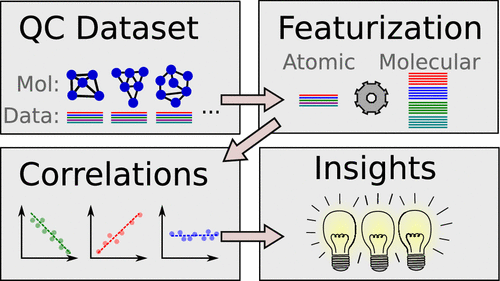Correlation-Based Framework for Extraction of Insights from Quantum Chemistry Databases: Applications for Nanoclusters

Abstract
The amount of quantum chemistry (QC) data is increasing year by year due to the continuous increase of computational power and development of new algorithms. However, in most cases, our atom-level knowledge of molecular systems has been obtained by manual data analyses based on selected descriptors. In this work, we introduce a data mining framework to accelerate the extraction of insights from QC datasets, which starts with a featurization process that converts atomic features into molecular properties (AtoMF). Then, it employs correlation coefficients (Pearson, Spearman, and Kendall) to investigate the AtoMF features relationship with a target property. We applied our framework to investigate three nanocluster systems, namely, PtnTM55–n, CenZr15–nO30, and (CHn + mH)/TM13. We found several interesting and consistent insights using Spearman and Kendall correlation coefficients, indicating that they are suitable for our approach; however, our results indicate that the Pearson coefficient is very sensitive to outliers and should not be used. Moreover, we highlight problems that can occur during this analysis and discuss how to handle them. Finally, we make available a new Python package that implements the proposed QC data mining framework, which can be used as is or modified to include new features.